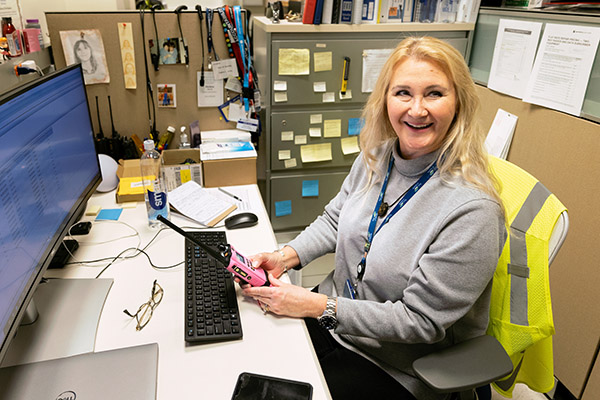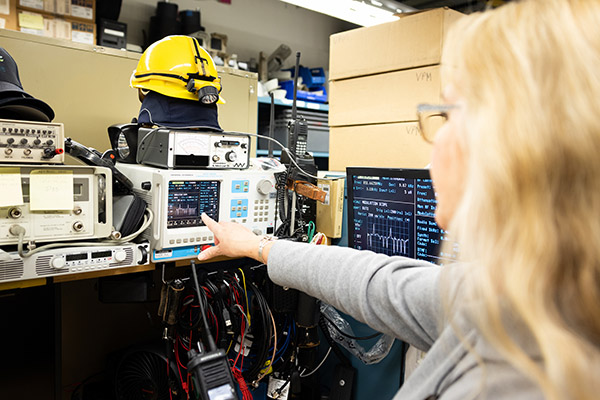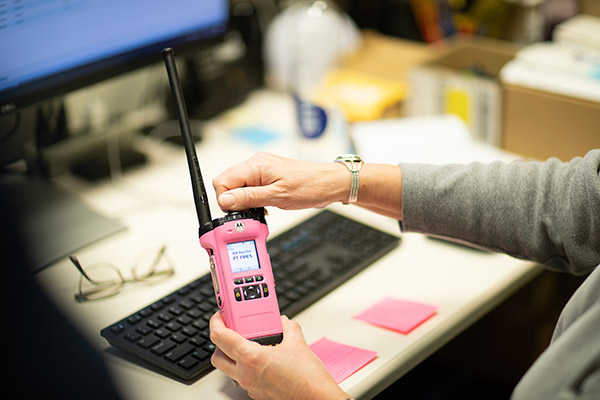
Debra Davis has always been fascinated by the way things work. But it took a while for her to see how that passion could translate into a career path.
“When I was younger, it wasn’t like anyone asked you if you wanted to be an electronics technician or an aircraft mechanic. I didn’t think about that back then but always enjoyed technology and I liked fixing stuff,” she said.
When Davis’s ex-husband, a pilot, was teaching her how to fly, she realized she couldn’t be in the left seat of the aircraft and not know how it works.
“I always liked fixing things, and I didn’t want to fly by myself to get my pilots’ license, but I realized I would love to know how airplanes work,” she said.
At age 26 she had been working in a local bank and was at a crossroads in her career. Davis took the plunge into her next step – enrolling at Embry-Riddle Aeronautical University (ERAU) in Florida to study Aviation Maintenance Technology. The technical program allowed her to get her FAA mechanic certificate. At the time, she was one of 375 women who received the required license to be an aircraft technician, with airframe and powerplant ratings.
While in the program she maintained a 4.0 while taking care of her two small children — an 18-month-old daughter and four-year-old son. After graduating from ERAU, she later returned to the Pacific Northwest to continue school with the support of nearby family. She attended South Seattle Community College, first studying avionics before switching to the Industrial Control and Robotics program. She fell in love with the problem-solving, hands-on work, and creativity needed to build something new.
Supporting first responders

An instructor (also an Automated Control Specialist at the Port of Seattle) recommended Davis for an open position with the Aviation Electronic Technicians group at the Port of Seattle because of her technical knowledge, fix-it mentality, and critical thinking skills. And the rest was history.
On October 13 2022, Davis celebrated her 25th anniversary at the Port. Davis, now a general foreman, is one of 63 technicians who maintain the satellite train system at the airport, also known as the SEA Underground, and other electronic systems at the Port technicians. Davis is responsible for the Port’s 800-megahertz public safety radio system and its 2000 users to help ensure effective public safety mission-critical and business-critical communications and public safety between the Port of Seattle’s Airport's 911 center, Airport Communications Center, Marine Maintenance Dispatch, and ramp tower and these communications centers’ radio users in the field.
Terrorism prompts opportunity

When the September 11 terrorist attacks happened, Davis was beside herself.
“I saw first responders not being able to communicate with each other. I started to look at what I could do to protect my agency.”
With spare equipment Davis built a radio system on wheels to improve communication and provide back up communications between radio users at the Port and mutual aid partners. This opened doors for Davis to use her expertise and radio system across the region.
Davis started working with the Department of Justice and regional, local, county, and state partners on the DOJ’s “25 Cities Project” to improve communications in areas vulnerable to terrorist attacks, using her mobile communications vehicle to connect radio communications throughout the region. The 25 Cities Project provided equipment that allowed the tri-county region along with WSP to tie our radio systems together at the radio dispatch (911 Center) level. She took the Communications Unit Leader Training and Communications Unit Technician Training as part of the National Incident Management System (NIMS) and worked to support emergency radio communications around Puget Sound.
Davis also has supported events that need a lot of radio interoperability communication power like the Seahawks Super Bowl Parade, Washington Special Olympics, and natural disasters like the Oso mudslide in Arlington in 2014.
With her electronics and aviation background, Davis initially planned to go back to school for an electrical engineering degree, but she fell in love with her role at the Port and the way she has been able to grow her skills and make a difference in Port operations and across the region.
Woman in trades

Because she's frequently the only woman in her department, Davis has seen a few challenges like finding a suitable uniform (the original standard uniform was created for men) and working at locations with no women’s restroom so she had to use the Janitorial or Custodial women’s restroom located outside of her work area. Since it took her three months to get her badge, she had to have a coworker escort her to the bathroom and wait outside the door.
Davis wishes she had learned growing up that a career in skilled trades was an option for a woman but is glad she landed where she did.
“The job itself is great, and the pay and benefits are great too. It’s an opportunity to learn different systems if you’re interested in that. It can bring up all these opportunities you never knew were possible,” she said.
Skilled trades at the Port

Working at the Port offers skilled trades professionals like Davis an incredible opportunity to work behind the scenes to help power the region's economic engine.
The Port’s team of skilled trade workers are essential in keeping our facilities and equipment running smoothly, and helping build, maintain, and restore essential infrastructure. As the Port grows the team of skilled trades workers, there's a conscious focus to encourage more women to apply for these well-paying jobs.








